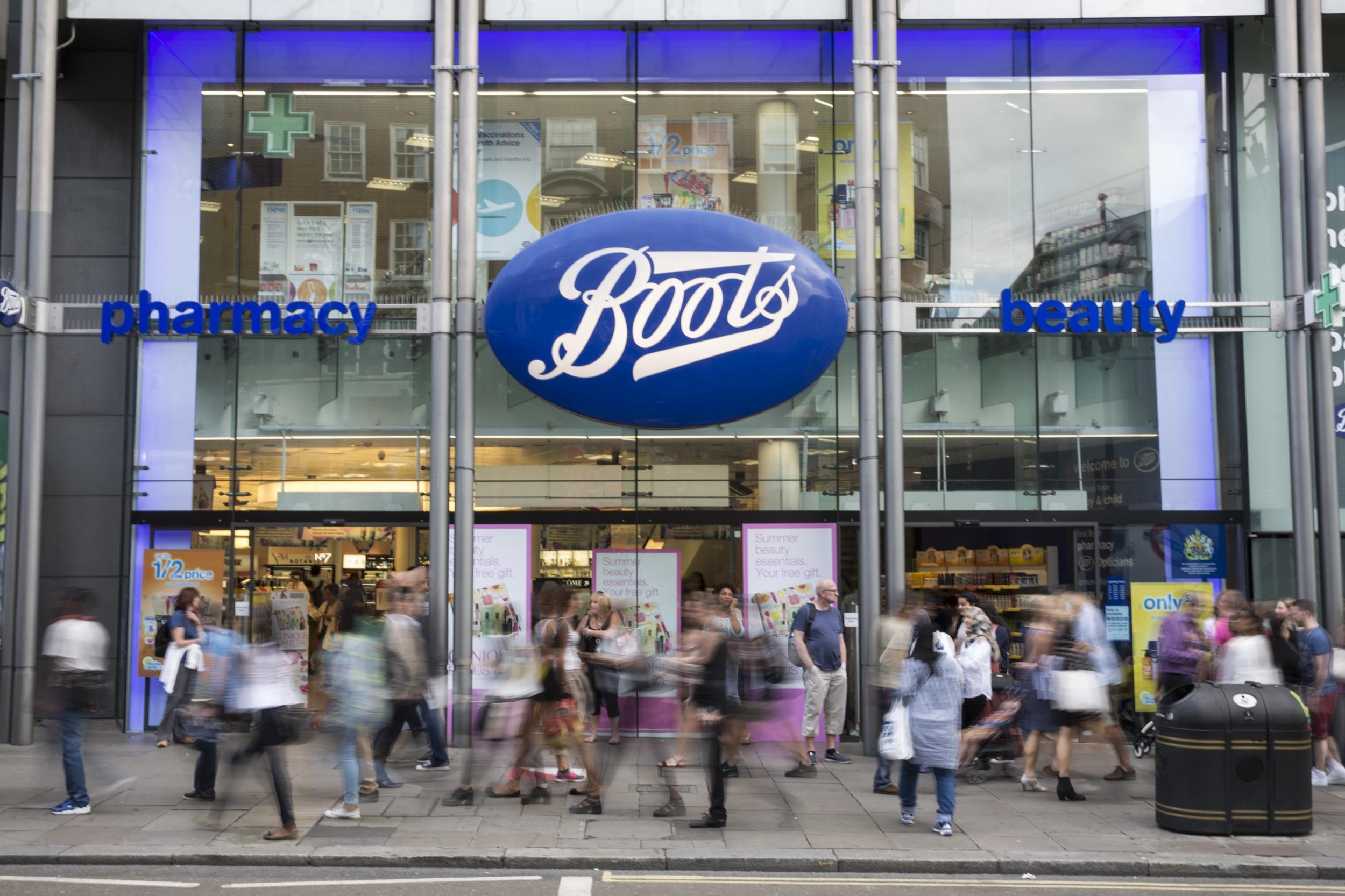Boots must try harder to address yawning gender pay gap
Of the 57,000 people that work at the pharmacist and retailer, some 78 per cent are female. Yet on average a male Boots employee gets paid 21 per cent more.

Your support helps us to tell the story
From reproductive rights to climate change to Big Tech, The Independent is on the ground when the story is developing. Whether it's investigating the financials of Elon Musk's pro-Trump PAC or producing our latest documentary, 'The A Word', which shines a light on the American women fighting for reproductive rights, we know how important it is to parse out the facts from the messaging.
At such a critical moment in US history, we need reporters on the ground. Your donation allows us to keep sending journalists to speak to both sides of the story.
The Independent is trusted by Americans across the entire political spectrum. And unlike many other quality news outlets, we choose not to lock Americans out of our reporting and analysis with paywalls. We believe quality journalism should be available to everyone, paid for by those who can afford it.
Your support makes all the difference.Boots is a textbook example of why forcing companies to publish their gender pay gaps is a thoroughly good thing.
Of the 57,000 people that work at the pharmacist and retailer, some 78 per cent are female. Yet on average a male Boots employee gets paid 21 per cent more.
The conservative Bow Group, and others who would claim we men are the ones that have it hard, might like to take note.
Naturally such a heavily female company was at pains to provide some “context” to the figures.
Such as, if you strip out the best paid 25 per cent of staff, Boots' workforce is even more dominated by women: some 82 per cent. Among these lower and middle earners, the pay gap is actually 1 per cent in women’s favour.
However, that only serves to emphasise just how much of a problem the company has at the top.
Not only are women relatively less well represented (68 per cent of best paid 25 per cent of employees) but the jobs with the really fancy pay packets are disproportionately held by male employees.
Most of the IT gurus (72 per cent) are, for example, men, and IT gurus get paid a lot. Most of the HR people (78 per cent) are, by contrast, women. They get paid rather less.
It’s also true that a lot of the top managers are men and the bumper packages commanded by these people inevitably skew the numbers.
In some ways they make Boots look a bit like one of those 1950s typing pools where the besuited male supervisor overseas a room full of women. That is an image the company ought to find embarrassing.
The fact that it was at pains to stress that the pay gap was only 5 per cent when using the median (middle value) average as opposed to the mean average, and the context it sought to provide suggest that it does.
Boots says it is trying to improve things. Its maternity offer has been enhanced, as have its efforts to provide more flexible working (which some of its male workers might also welcome).
I did detect a willingness to talk about the issue too, which isn’t always the case with companies that have to publish things that make them uncomfortable.
None of this changes the fact that Boots has to try harder, particularly when it comes to getting women into top roles like the one occupied by its UK and Ireland MD Elizabeth Fagan, who was chosen to give the comments with the statement issued with the figures.
But she and her colleagues are not alone in that.
Subscribe to Independent Premium to bookmark this article
Want to bookmark your favourite articles and stories to read or reference later? Start your Independent Premium subscription today.
Join our commenting forum
Join thought-provoking conversations, follow other Independent readers and see their replies
Comments